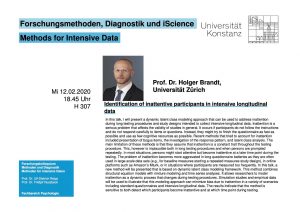Thanks for attending our 4th Summer School on Internet-based Data Collection and Analysis 2021
Thank you for attending our 4th Summer School on Internet-based Data Collection and Analysis last week, including topics like concepts of internet-based research, methods and best practices, apps, standards, visualization, theory and model testing, mixed models, analysis of internet data, social media, mobile experience sampling, and big data.
The Summer School was not only an excellent opportunity to meet and interact with people interested in modern approaches to data collection and analysis; it was also a perfect way to learn about other peoples’ experiences in academia, business, and government. This exchange also happened during the recreational program points (such as wine tasting, 3D mini golf, dinner, …), and increased the creativity and productivity of the summer school in a profound way. Thanks for attending and making this event such a huge success – check out our event video! And: See you in two years again!
Photos in the video by U.-D. Reips, J. Caffier, L. Roth, G. Afunts, & N. C. Banh


